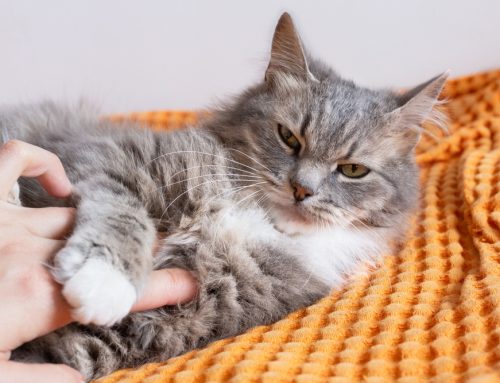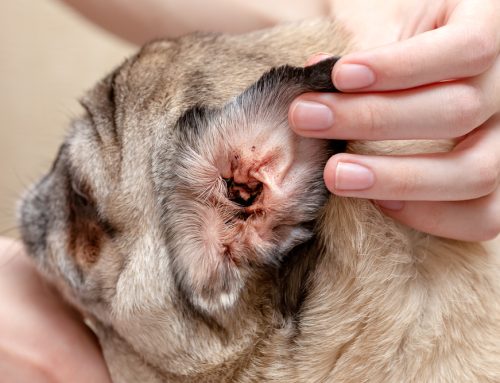Out with the old, in with the new. The new year is a great opportunity for anyone who wants a fresh start. It’s time to make better choices, establish new habits, and set new goals for your pet’s health. Check out five ready-to-use, pet-friendly New Year’s resolutions from Countryside Veterinary Hospital.
#1: Invest in your pet’s health
Preventive veterinary care is key to helping your pet live a longer, healthier, and happier life. Investing in your pet’s wellness while they are healthy can help eliminate many life-threatening hazards and minimize their risk to many others.
At your pet’s yearly physical examination, our veterinary team assesses your pet for subtle changes that indicate early disease, injury, or pain long before any visible signs, allowing us to successfully intervene with less invasive, more affordable treatments. Routine tests for heartworms and tick-borne illnesses, and fecal screenings ensure your furry friend is not harboring dangerous parasites, while vaccinations boost immune response against harmful infectious viruses in their environment.
The annual visit is also the perfect time for us to provide personalized recommendations for your pet’s home care, including training, grooming, nutrition, and basic husbandry—small tips that can improve your pet’s comfort, health, and behavior.

#2: Improve your pet’s physical fitness
Make a commitment to get out and play with your pet! Regular physical exercise increases your pet’s cardiovascular stamina, supports lean muscle mass, improves joint health, reduces boredom and anxiety-related behavior problems, and helps them maintain an ideal body weight. And regular exercise is good for you, too.
Always check with your veterinarian before beginning a new exercise program or physical activity with your pet—especially if they are overweight. Your veterinarian can help you determine safe activities for your pet’s current health and formulate their appropriate goals (e.g., weight loss, increased stamina, signing up for a beginner agility or flyball class).
Generally speaking, healthy dogs should exercise 20 to 30 minutes per day (e.g., a brisk-paced walk, physical play with you or a toy). Cat play sessions should mimic their natural hunting style (i.e., short in duration, but high in intensity), so aim for two to three five-minute daily sessions.
#3: Feed your pet measured portions
Most dog and cat food label information about the amount of food the average pet should consume per day is misleading, resulting in many overfed pets. And, combined with inadequate exercise, you can easily see why nearly 60% of U.S. dogs and cats are considered overweight or obese.
This year, don’t dish out the same food amount or fill your pet’s dish to the brim—feed your pet strategically, based on their individual needs. This includes:
- Calculating your pet’s daily calorie requirement — Ask your veterinarian for guidance or use an online calorie calculator. Then, check the calories per cup of food on your pet’s food packaging, determine calories per cup, and calculate your pet’s precise portion.
- Replacing free-choice feeding with timed meals — Pets who are allowed to graze on their food throughout the day can develop unwanted habits, such as picky eating and overeating out of boredom. Measured, time-restricted meals help you monitor your pet’s appetite and note early changes.
- Using a measuring cup — Precisely measured portions help you avoid over or underfeeding your pet.
- Tracking your pet’s body condition score (BCS) — Assess your pet’s overall condition monthly using this simple scoring system. If your pet’s score changes, adjust their food portions accordingly, and notify your veterinarian.
#4: Care for your pet’s dental health
If you haven’t looked inside your pet’s mouth lately, the new year is a great time to lift the lip on their oral health and commit to better care. Approximately 70% of cats and 80% of dogs show dental disease signs by 3 years of age. If your pet is older than 3, resolve now to schedule an oral health assessment at Countryside Veterinary Hospital. If your pet already has dental disease signs, they may need a dental cleaning under anesthesia to start them on their journey to better oral health.
After a thorough cleaning, begin a new regimen for your pet’s dental health.
- Brush your pet’s teeth every day — Experts recommend brushing your pet’s teeth at least three times per week to fight plaque and tartar.
- Feed a dental diet — Veterinary dental diets, which are designed to encourage chewing, help scrub the tooth’s surface. Dental diets can be a great alternative for pets who do not tolerate toothbrushing.
- Pour in some plaque-fighting water additives — Flavorless and odorless dental water additives (e.g., HealthyMouth) act like mouthwash for pets.
- Replace harmful dog chews with safe dental alternatives — Hard bones and chew toys commonly cause painful dental fractures. Swap inflexible bones (e.g., marrow bones, shin bones, hooves, yak’s milk chews, antlers) for dental chews approved by the Veterinary Oral Health Council (VOHC).
#5: Learn a new skill with your pet
Boredom can lead to unhealthy and unhappy pets, as well as undesirable behaviors, such as reactivity, anxiety, and destructive tendencies. Expand your pet’s mind and strengthen your bond by teaching them a new behavior or silly trick, or going back to school—obedience school, that is! Whether you prefer an in-person class or an online learning format, training can greatly enrich and enhance your pet’s life.
Make this year the best one yet for your pet by resolving to invest in their health and wellbeing. For more ways to help your pet live their best life, or to schedule their annual wellness exam, contact Countryside Veterinary Hospital.








Leave A Comment